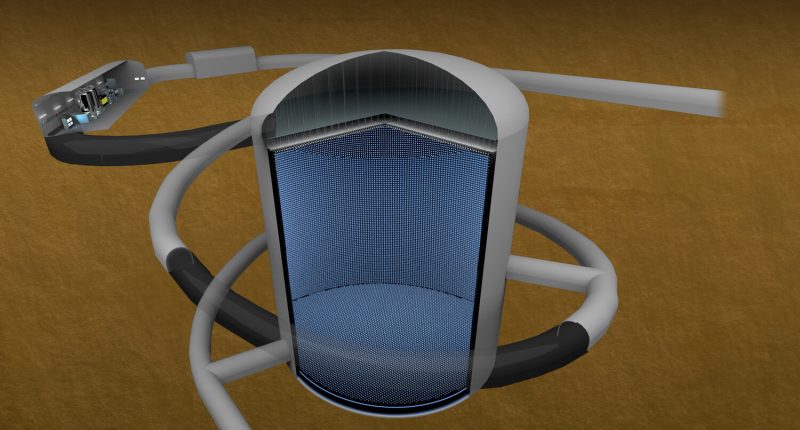JAPAN is hollowing out a mountain to make a huge water bottle that could solve the universe’s biggest riddle.
The enormous cavern will be pumped full of an incredible 260million litres of water and costs an eye-watering £400million to construct.
The aim of the project is to detect tiny particles called neutrinos which make up our universe.
Neutrinos are the smallest particles and are even smaller than atoms – making them extremely difficult to spot.
They act in strange ways whizzing through space and passing through planets with ease without interacting with other matter.
Billions of them move through your body all the time, without having any effect on you at all, according to The B1M.
Scientists believe if we can understand how this happens then it could dramatically change the way we think about the universe.
And so, in 2020, they began to hollow out Mt. Nijuugoin Kamioka, Japan, and created the bare bones of the research institute dubbed “Hyper-Kamiokande”.
The experiment is led by the University of Tokyo and supported by researchers from 21 countries.
The observatory works by using 40,000 photodetectors which will line the inside of the cavern.
Most read in Science
These are so sensitive that a single one could easily detect the beam of a flashlight being used on the moon.
The detectors have also been manufactured to withstand the enormous weight of 260,000 tonnes of water.
When neutrinos pass through the tank, occasionally they’ll collide with electrons, giving off a weak glow, known as Cherenkov radiation.
Once installed, these photodetectors will act as a giant camera that will register the faint traces of light given off by the radiation and observation can begin.
So far all that exists of the structure is a humongous concrete shell.
And – measuring over 80 metres high and nearly 70 metres wide – it’s big enough to fit an entire Boeing 747 standing on its end.
The dome was created to withstand the enormous weight of rock on the observatory that will sit 681-meters below the mountain peak.
The density of the rock is the equivalent of the observatory sitting 1.7 kilometres below the surface of the ocean.
The huge crater is accessed through a two-kilometre approach tunnel which – using a drill and blast method – took just nine months to complete.
This approach tunnel leads to the centre of what will become the roof of the observatory.
When complete the incredible structure will be the largest neutrino observatory in the world – four and a half times larger than the world’s largest aquarium at Seaworld Abu Dhabi.
Japan is also home to another neutrino observatory dubbed “Super-Kamiokande” which is located near the city of Hida and began functioning in 2006.
Building work is expected to fully complete in 2026 and the Hyper-Kamiokande should start detecting neutrinos and performing other experiments by 2027.
Learning more about atoms is important as it has contributed to medical breakthroughs including treatments for AIDS and countless other medicines.
READ MORE SUN STORIES
It’s also led to greater understanding of fluid dynamics, which gives us more accurate weather forecasts.
The team have now begun the next stage of the project, blasting down through 71 metres of rock to create the enormous cavern the observatory will sit in.















